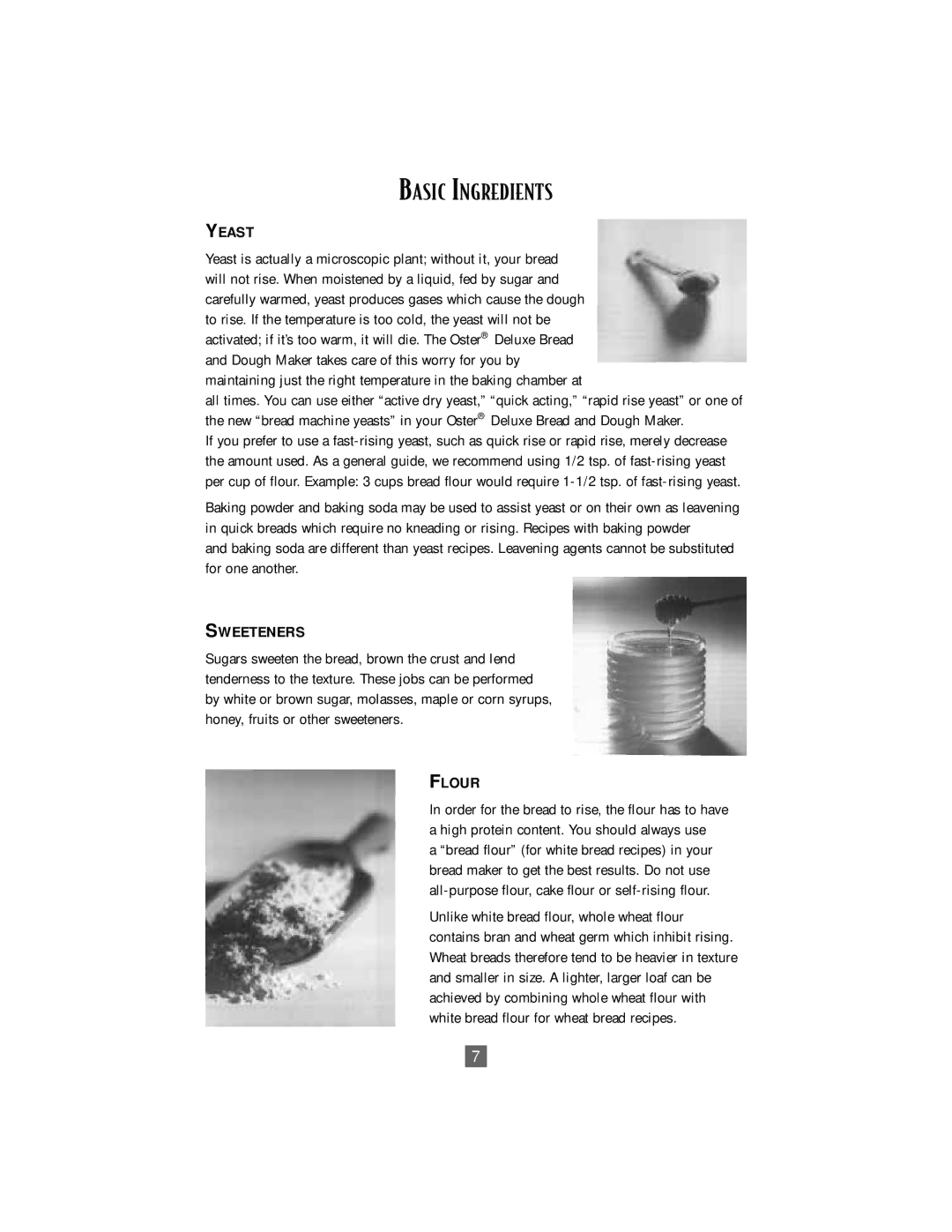
BASIC INGREDIENTS
YEAST
Yeast is actually a microscopic plant; without it, your bread will not rise. When moistened by a liquid, fed by sugar and carefully warmed, yeast produces gases which cause the dough to rise. If the temperature is too cold, the yeast will not be activated; if it’s too warm, it will die. The Oster® Deluxe Bread and Dough Maker takes care of this worry for you by maintaining just the right temperature in the baking chamber at
all times. You can use either “active dry yeast,” “quick acting,” “rapid rise yeast” or one of the new “bread machine yeasts” in your Oster® Deluxe Bread and Dough Maker.
If you prefer to use a
Baking powder and baking soda may be used to assist yeast or on their own as leavening in quick breads which require no kneading or rising. Recipes with baking powder
and baking soda are different than yeast recipes. Leavening agents cannot be substituted for one another.
SWEETENERS
Sugars sweeten the bread, brown the crust and lend tenderness to the texture. These jobs can be performed by white or brown sugar, molasses, maple or corn syrups, honey, fruits or other sweeteners.
FLOUR
In order for the bread to rise, the flour has to have a high protein content. You should always use
a “bread flour” (for white bread recipes) in your bread maker to get the best results. Do not use
Unlike white bread flour, whole wheat flour contains bran and wheat germ which inhibit rising. Wheat breads therefore tend to be heavier in texture and smaller in size. A lighter, larger loaf can be achieved by combining whole wheat flour with white bread flour for wheat bread recipes.
7
